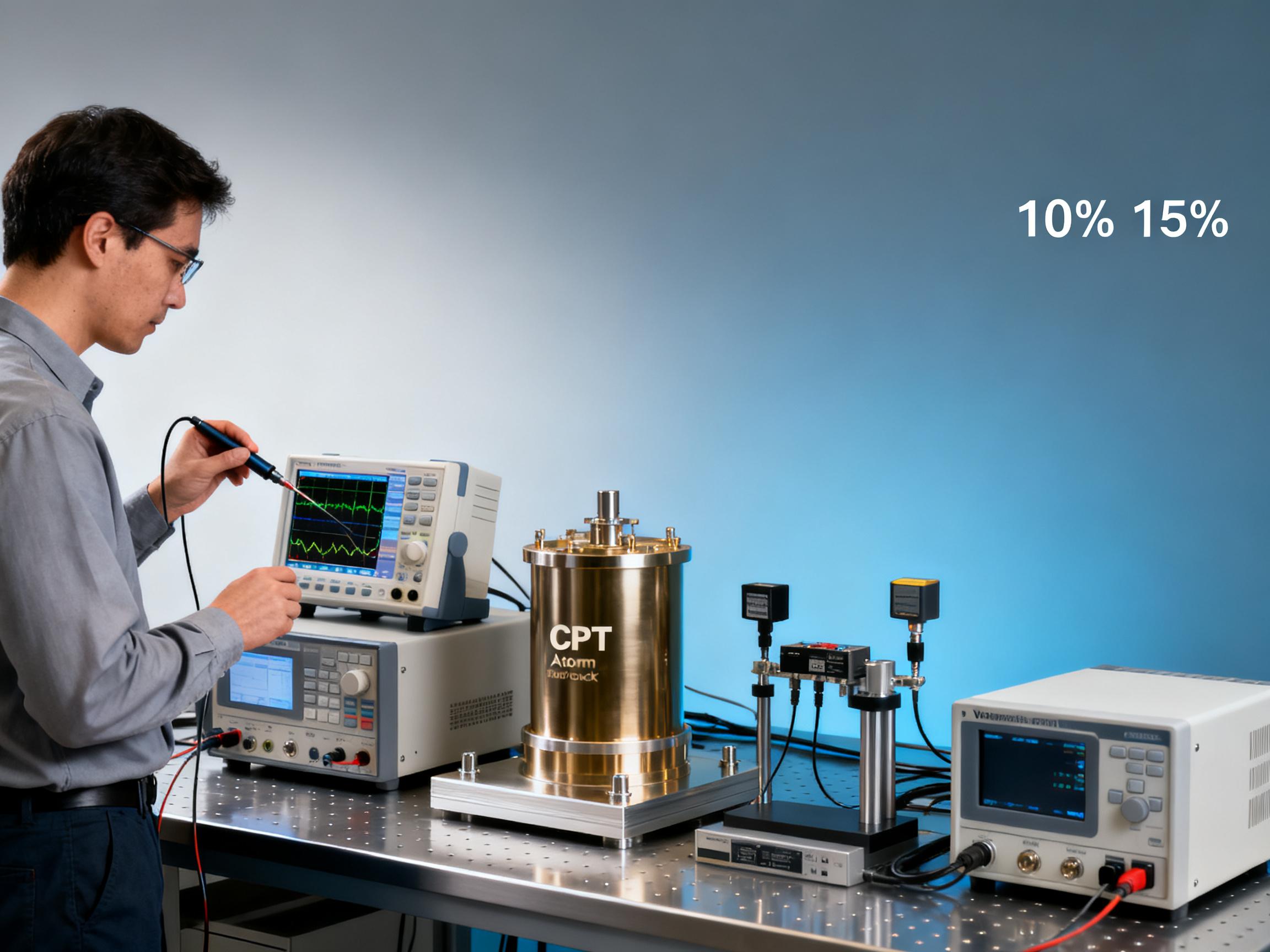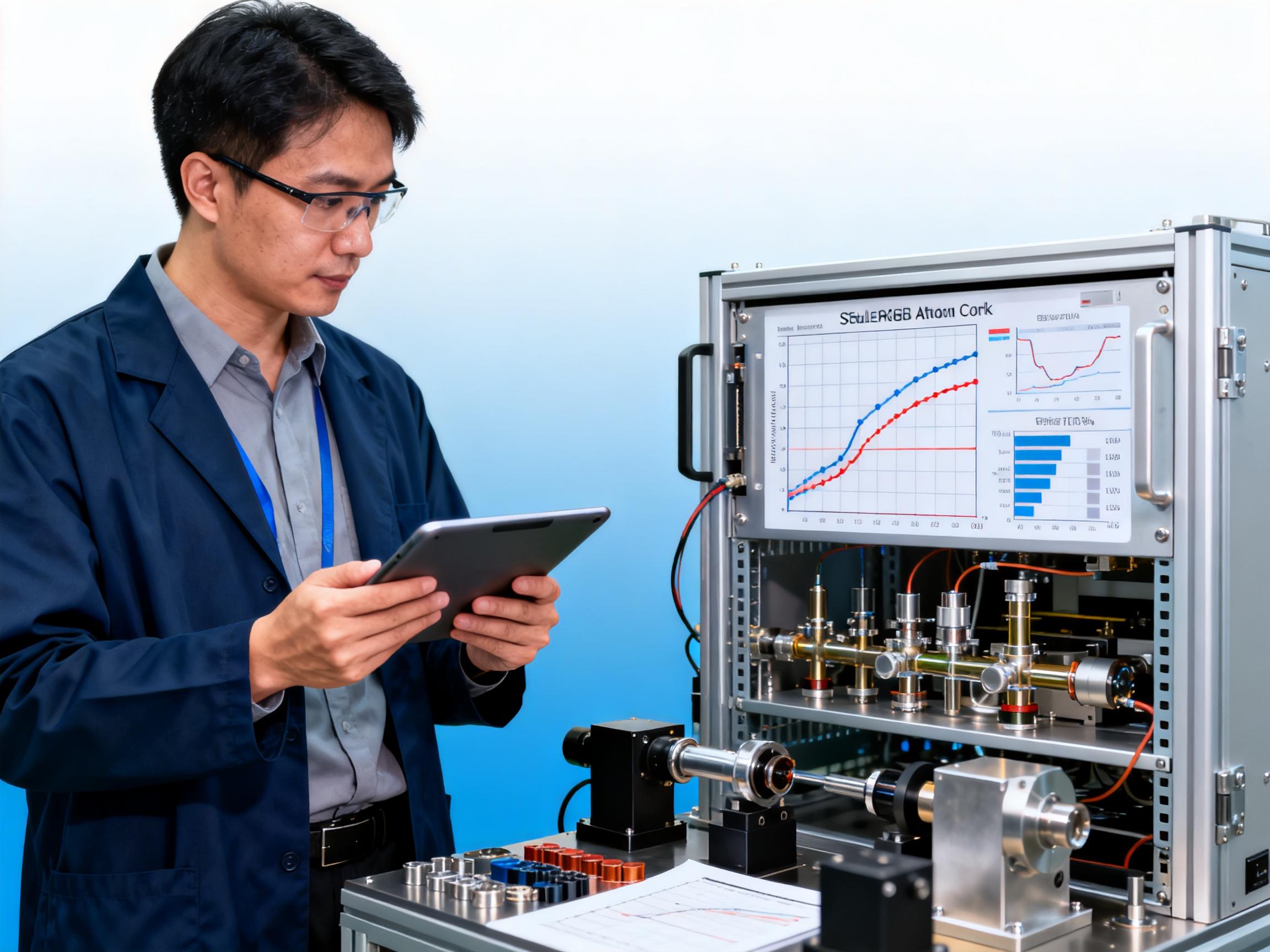RELATED
![How CPT Atomic Clocks Reduce OPEX in 5G Base Stations [Real Data] How CPT Atomic Clocks Reduce OPEX in 5G Base Stations [Real Data]](https://usimg.bjyyb.net/grey.png?x-oss-process=image/resize,m_fixed,w_800,h_600,limit_0) How CPT Atomic Clocks Reduce OPEX in 5G Base Stations [Real Data]2025-12-11
How CPT Atomic Clocks Reduce OPEX in 5G Base Stations [Real Data]2025-12-11 2024 CPT Atomic Clock vs Rubidium: Which Offers Better Stability for Telecom Networks?2025-12-08
2024 CPT Atomic Clock vs Rubidium: Which Offers Better Stability for Telecom Networks?2025-12-08 Live Demo Results: CPT Atomic Clock Performance Under Harsh Environmental Tests (Data Inside)2025-12-05
Live Demo Results: CPT Atomic Clock Performance Under Harsh Environmental Tests (Data Inside)2025-12-05 Budgeting for Precision: Total Cost of Ownership for a Rubidium Atomic Clock Over 5 Years2025-12-03
Budgeting for Precision: Total Cost of Ownership for a Rubidium Atomic Clock Over 5 Years2025-12-03
MESSAGE
Time-frequency analyzers have a wide range of uses, covering multiple fields, mainly reflected in the following aspects:
1. Communication Field
Signal Modulation Method Analysis:
Accurately identify the modulation method of communication signals, such as amplitude modulation (AM), frequency modulation (FM), phase modulation (PM), quadrature amplitude modulation (QAM), etc. Through time-frequency analysis of modulated signals, engineers can determine modulation parameters, evaluate the quality and effect of modulation, and ensure accurate transmission and reception of signals.
Signal Quality Evaluation:
Detect noise, distortion, interference and other problems in communication signals. For example, by observing the time-frequency graph, you can find the spurious frequency components in the signal and determine whether there is an external interference source; analyze the changes in the amplitude and phase of the signal over time to evaluate the stability and reliability of the signal.
Synchronization And Timing:
Help determine the synchronization signal and timing information in the communication system. In wireless communication networks, accurate synchronization is essential for communication between base stations and mobile devices. Time-frequency analyzers can be used to detect and adjust synchronization signals to ensure the accuracy and efficiency of data transmission.
Spectrum Monitoring And Management:
Real-time monitoring of the spectrum usage of communication frequency bands, discovery of spectrum holes and interference frequency bands, and providing a basis for the rational allocation and management of spectrum resources. This is of great significance for improving spectrum utilization, avoiding interference and ensuring communication quality.
2. Aerospace Field
Radar Signal Analysis:
Time-frequency analysis of radar transmitted and received signals to identify the characteristics of radar signals, such as pulse width, repetition frequency, modulation mode, etc. This helps in the performance evaluation of radar systems, target detection and tracking, as well as the research and formulation of anti-interference measures.
Satellite Communication:
In satellite communication systems, time-frequency analyzers are used to analyze the quality and characteristics of satellite signals to ensure reliable communication between satellites and ground stations. It can detect problems such as signal fading and multipath effects, and provide corresponding solutions to improve the stability and reliability of satellite communications.
Navigation System:
Time-frequency analysis of signals in aerospace navigation systems, such as the Global Positioning System (GPS) and Beidou satellite navigation system. By analyzing the time-frequency characteristics of navigation signals, positioning accuracy can be improved, abnormal changes in signals can be detected, and the safe operation of navigation systems can be guaranteed.
3. Electronic Measurement And Testing Field
Power Signal Analysis:
Analyze the ripple, noise and frequency stability of the power signal. For example, in the power design of electronic equipment, the time-frequency analyzer can help engineers detect the ripple size and frequency component of the power output, evaluate the quality of the power supply, and ensure the normal operation of the equipment.
Oscillator Performance Test:
It is used to test the performance indicators of the oscillator such as frequency stability and phase noise. Through the time-frequency analysis of the oscillator output signal, the frequency drift, short-term and long-term stability, and phase noise level of the oscillator can be accurately measured, providing a basis for the optimization design and selection of the oscillator.
Integrated Circuit Testing:
In the design and testing of integrated circuits (ICs), the time-frequency analyzer can analyze the timing and frequency characteristics of the IC internal signal, detect signal delay, jitter and other problems, and ensure that the performance of the IC meets the design requirements.
4. Biomedical Field
Bioelectric Signal Analysis:
Perform time-frequency analysis on bioelectric signals such as EEG, ECG, and EMG to extract characteristic information from the signal and assist in the diagnosis and treatment of diseases. For example, by analyzing the time-frequency characteristics of EEG signals, abnormal EEG activity patterns during epileptic seizures can be detected, providing important reference for the diagnosis and treatment of epilepsy.
Physiological Signal Monitoring:
Real-time monitoring of changes in physiological signals to evaluate the physiological state of the human body. For example, by analyzing the time-frequency characteristics of ECG signals, the rhythm and function of the heart can be monitored in real time, and abnormal conditions such as arrhythmia can be detected in time.
5. Scientific Research Field
Physics Research:
In physics experiments, time-frequency analyzers are used to analyze the time-frequency characteristics of various physical signals, such as optical signals, acoustic signals, etc. For example, in quantum optics experiments, time-frequency analysis can help researchers study the quantum properties and coherence of light; in acoustic research, time-frequency analysis can be used to analyze the frequency components and time changes of sound, and study the generation and propagation mechanism of sound.
Material Science Research:
By performing time-frequency analysis on the vibration signals, thermal signals, etc. of materials, the physical properties and structural changes of materials are studied. For example, in fatigue testing of materials, time-frequency analysis can detect the changes in vibration signals of materials under different loads and evaluate the fatigue life and performance of materials.
As a powerful signal analysis tool, time-frequency analyzer plays an important role in many fields and provides key technical support for signal understanding, processing and optimization.
CONTACT US
Please use the form below to get in touch.
If you need a reply we will get in touch as soon as possible.

![How CPT Atomic Clocks Reduce OPEX in 5G Base Stations [Real Data] How CPT Atomic Clocks Reduce OPEX in 5G Base Stations [Real Data]](https://usimg.bjyyb.net/sites/91500/91958/1765179857856560163985903616.jpeg)



